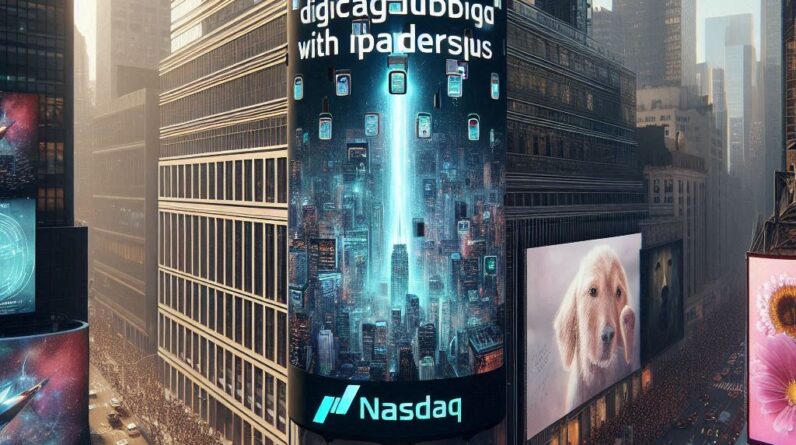
[ad_1]
Rostyk Wynnyckyj, Technical Sales Engineer at LAVA Computer MFG Inc., joined Digital Signage Today by video link from his office in Toronto to share this 20-minute masterclass on batteries and how to protect them, from digital signage and tablets to our personal phones.
 Rostyk Wynnyckyj, Technical Sales Engineer at LAVA Computer MFG Inc. Image courtesy of Daniel Brown/Networld Media Group.
Rostyk Wynnyckyj, Technical Sales Engineer at LAVA Computer MFG Inc. Image courtesy of Daniel Brown/Networld Media Group.
Everyone knows that lithium ion batteries have a shelf life, along with the devices that use them — but did you know that you can take steps to extend the life of your devices?
Rostyk Wynnyckyj is an engineer by training and by profession is a Technical Sales Engineer at LAVA Computer MFG Inc., a Ukrainian-Canadian family-owned computer manufacturer based in Canada.
He joined Digital Signage Today by video link from his office in Toronto to share this 20-minute masterclass on how and why we should be protecting our batteries, from point-of-sale checkout tablets to hotel check-in desks, industrial touchscreen devices, and more, explaining the science and engineering behind lithium batteries in simple terms and offering useful strategies to extend your devices’ lives, from your personal phone to various lithium ion battery-powered tablets and digital signage devices in your business.
Regardless of the hardware and software you choose for this task, Wynnyckyj makes the case for all battery users to exercise good habits in extending battery life, with benefits ranging from the checkbook (think ROI) to the environment and sustainability (think the climate, e-waste and landfills).
Video credit: Daniel Brown/Networld Media Group. |
Highlights
Core notes and takeaways include:
- If possible, do not continuously charge your battery (in B2B and B2C use cases alike).
- “When I talk to a lot of people, the first thing I tell them is, don’t charge your phone overnight.”
- Overcharging (aka Trickle Charging) is not good for the phone’s battery.
- 40%-70% seems to be the sweet spot for this type of battery for health and longevity (cf. interview with Ori Mor).
- Lithium ion batteries do not like to be overcharged.
- While lithium is an abundant element, recent estimates indicate that it is finite on our planet, meaning that there could be a limit to how much we can harvest in the future.
- Alternate battery types are being researched, but not all battery types work for all use cases.
- Research and prototypes include sand batteries and saltwater batteries.
- Battery modulation can help extend your battery life (analogous to a “workout” for your battery).
- Cooling systems, even passive cooling, can also help.
- Using good battery practices can extend the lifetime of some devices from around two years up to around six or seven years, depending on a range of variables.
Interview has been edited for length and clarity. Stock footage courtesy of Adobe Stock.
Video Transcript
Transcript made with help from Otter.ai.
Rostyk Wynnyckyj
Yeah, so my name is Rostyk. I’m a Technical Sales Engineer here at LAVA computers. I graduated mechanical engineering in 2020, and have been working as a Technical Sales Engineer here at LAVA for a little bit over three years now.
Daniel Brown
Is that like a combination of marketing and the science behind the product? How does that work?
Rostyk Wynnyckyj
It’s very close. Um, it’s more of a sales and engineering role. So it’s that smushing of those two things together. So it’s basically an interface between, obviously the customer, but also the sales people. And the engineering — so trying to take some of the very technical things that are going on, filtering them through for things that are relevant or easier to understand or reshaping them into a way that a customer who doesn’t have background in batteries, background in all these different subjects — in a way that they can understand.
Daniel Brown
Battery protection is something that has become really hot, I think, in digital signage, with kiosks and so forth. We’ve covered several industry events, including restaurant franchising and hotels — can you give us the lowdown? What’s the basics? What is this battery protection? Why does it matter?
Rostyk Wynnyckyj
Sure, well, anything that that involves a battery, you obviously want to get the most life out of it. You want to make sure that not only are you getting life out of it, but you’re getting efficiency, because that is either a cost item — So from a business perspective, the longer something lasts, the more ROI the happier customers are. So the standard kind of rules of business apply. From a user perspective, there’s obviously those aspects of: when I buy a device, whatever that may be, I want it to last as long as possible, I want that user experience out of it. So it’s a holistic concept of protecting batteries for that user and business experience and positives. And obviously, a little bit of an environmental thing — the longer something lasts, whatever that may be not just batteries, the less you’re replacing it, the less turnaround you have, the less new materials you’re using. So it’s this very broad ecosystem of reasons.
Daniel Brown
Recently I was staying at a line of hotels, and I noticed instead of a clunky old CRT monitor from the 90s that I remember, they had like literally Lenovo tablets or what have you on swivels at the check-in station they’re swiping and touching — no keyboards necessary, which is brand new for me. Is that a use case where people can start protecting their devices better?
Rostyk Wynnyckyj
Yes. And that’s actually one of those, I’d say hidden use cases that a lot of people don’t think about, because most people will immediately go, ‘Wwell, you know, I have a phone from XYZ manufacturer, I want that to last as long as possible, I want my phone to be around for two years, three years.’ That’s a pretty normal life cycle. What a lot of people don’t realize is, well, if you’re taking off the shelf, tablets or devices with lithium ion batteries built in, you want to make sure that that doesn’t become a weak point of your system. And because and that example you have is actually a very good one, in my opinion, because you have a tablet that’s running 24/7: obviously, it’s going to be plugged in all the time. So people naturally go, ‘Well, if it’s plugged in all the time, there should be no problem.’ There’s actually problems with doing that. And that’s one of kind of those tips and tricks of, you know, how to make your devices last longer, is not to have them be plugged in all the time or to mitigate that in certain ways. And how that translates into, for example, the hotel, an ROI, is that there’s no degradation. So even though you’re always running your battery connected, that might actually decrease the lifespan of that battery to the point where you might have bloating occurring in the extreme, you might start having kind of this where the moment there’s a power outage or any sort of glitch in the system, because that battery has degraded to such a point — it’s basically not a battery anymore, it’s not just become this big capacitor that isn’t really doing much. So the moment that the power is lost, it just dies. Because it can’t hold discharge anymore, which obviously doesn’t work anymore. So those are these kind of hidden areas where — Yeah, battery protection is actually something that really should be thought of as part of the process.
Daniel Brown
How does the science work? How are you — how does one protect the battery in this way?
Rostyk Wynnyckyj
The first thing: if possible, do not continuously charge your battery. And this goes for B2B applications, B2C applications. When I talk to a lot of people, the first thing I tell them is, don’t charge your phone overnight. As you know the first thing that people think of because lithium ion batteries do not like being overcharged. What is overcharging? Overcharging is just a name that’s used for getting it up to 100% and staying at 100%. So, that trickle charge. These are common terms that you’ve probably heard of, you know, trickle charging is a common term you use for your car battery, very different principles, but that’s where you’ve heard of trickle charge. That’s also an aspect of it. What works for one battery type — like your car battery — does not necessarily work for something else. The analogy I use is: you know, if you want to be a long distance runner. You use a very different training routine than if you want to be a powerlifter. Not everything works for every single battery. And to be cognizant of that is very important. So yeah, don’t overcharge it, don’t keep it at 100%. If at all possible, if you can disconnect it, when it’s at 95%, you’re already doing better than sitting at 100%. That’s very important to remember. Now, a lot of manufacturers have started really trying to put in software that’s able to detect that a little bit, but there are always and this is not trying to say that they’re doing anything bad. But there are physical limitations to what can be done in software, or what can be done in hardware. And that’s why these good practices are still important. Because when the device is on, and this is something that most people don’t understand, is — or don’t know about is — that when a device is on, you have obviously a flow of charge in — so you’re charging through your charger — but you’re obviously using it at the same time. So this battery becomes kind of like a bucket with a hole at the top a hole at the bottom. Now the computer inside is called a charge controller; think of it as just a computer that deals only with the battery, its only job is to make sure that the battery is being charged, in the best, safest and healthiest way. It’s kind of got multiple roles to do. It gets confused, because it’s physically impossible for it to predict what the outflow of energy is, because that’s always changing, your processor is turning on and off. If you walk up and start, you know, using the tablet, obviously, it’s going to be very different than if it’s in a standby mode. So it’s doing the best job it can with the tools it has, and with the, just the physics that it can do. So it’ll always try to a little bit overcharge, err on the on the on the side of caution going well, you know having 100% battery, that’s what what the user wants. So we’re always going to take a little bit extra charge, just in case. And that’s where things break down. And that’s why it’s so important not to be plugged in all the time. Because that controller just can’t keep up in many ways.
Daniel Brown
Is there a side of sustainability related to this battery protection?
Rostyk Wynnyckyj
Very much so, very much so there is. The longer battery can last, the less you have to replace it. Now there’s a lot of stuff talked about, the whole concept of reusability and replacement and how how that can impact sustainability from that perspective. The other thing that isn’t talked about all that much is the fact that lithium — the process of refining lithium, and not to get super deep into the weeds, but the process of refining lithium is very dirty. It is just the way things are done. And it’s not something that you know, we can’t come up with a better technology, it’s just, it’s the nature of the beast. So the less lithium that we need to refine, and all of those extractive processes for all these heavy metals, the less obviously that has an impact on the environment, the better it is. Also the way the most efficient way that batteries are built today are is not necessarily the best way that they can be recycled. So there’s this problem of: to build a really easily recyclable lithium ion battery costs something that, you know, it would put your your laptop, your phone, probably up by another $100. Now, that’s just me — kind of a guesstimate. So it’s it’s not a an educated statement. But it’s it’s a guesstimate. It would make it very, very expensive and actually would lose efficiencies, size, efficiencies do become a factor. Now there’s a lot of research going on. There’s one that I recall, I’d have to find the article, but where they are working on it, where there is a university in the UK that is really trying to come up with better ways. But it’s just an emerging technology. It’s an emerging concept. And there are real world barriers and problems to that. So I mean, we’ve got some of the brightest minds in the world working on this.
Daniel Brown
Well, it sounds like this work. Sorry to jump in. But with the EV revolution, it sounds like that could also affect the cars and the buses, and so forth,
Rostyk Wynnyckyj
Very much so. And that’s the thing is also that there are and it’s only now that we’re you know, we’re looking at lithium and being such an important resource. We’re only now starting to really take a wide picture look of how much lithium actually exists on the planet. So you know, it’s kind of what we’ve heard about with with fossil fuels. There’s very good estimates about approximately how much is left where it is, how much can we get at it? We’re starting to do that with lithium. And there are starting to be very big questions about how much lithium really is out there. It is a very abundant element. But is there enough to be able to replace all of the things that we use fossil fuels for or all the, you know, all the different portable devices that we have all the EVs that are starting to be — and realistically if we’re starting to put everything into EVs? That’s a lot of devices now, can we achieve this just by mineral extraction? Or are we starting to see that the only way that the math is going to work is by recycling and trying to re-extract what was already built so all that the waste that exists?
Daniel Brown
So do you think we’ll eventually, and this is kind of getting super woo, right? But do you think we’ll eventually get off of lithium? Will we discovered new ways to store power that are better?
Rostyk Wynnyckyj
Personally, I believe yes, now obviously this is very much so just a personal statement of mine. Um, there’s there’s a huge debate going on in the communities of what is possibl, what is not. The reason why I say that I personally believe that that will be the case is it’s the same thing as when we had the internal combustion engine most people said, you know, ‘this is the most efficient, this is all we have,’ until we had the EV revolution. Before the internal combustion engine, a horse or a donkey was was, you know, so as technology changes, our mindset changes, the world changes. And sometimes that does take time. But there’s very cool research going on in terms of everything from saltwater batteries. It’s an emerging piece of research kind of trying to just use saltwater. And that’s looking a little bit at the concepts of, well, what happens if we have a natural disaster and all of a sudden, these massive batteries break, we now have a lithium spill? Well, we’ve seen with cars, obviously, lithium fires, they are very difficult to deal with. So all of these different factors are driving very different research.
Daniel Brown
Wait, wait, so is that why, on the airport, they always say you can’t have lithium, but in your bag, you can have a battery in your bag.
Rostyk Wynnyckyj
That is that is one of the factors Yes, is that and it’s got to do with basically runaway fires. So lithium when it gets exposed to basically water moisture in the air. It can — not always — but it can turn into a basically a chain reaction. That is you can’t really stop it, it will basically have to burn itself out and that goes with any lithium device. So this is you know not picking on on EVs or laptops or otherwise it’s just a physics thing. Or a chemistry thing actually rather.
Daniel Brown
Well because I was having a nice soak in the jacuzzi with my laptop and suddenly I thought is this a good idea — so now I know not to do that anymore.
Rostyk Wynnyckyj
That on with that respect, I would actually say it’s more of if your laptop falls into the water, that’s where you’re gonna have a problem. Lithium batteries are very well built. They are they are actually built into this plastic enclosure that and that’s why you see battery Bloating is and you know that spicy pillows thread in on Reddit that some people sometimes like look at. They’re well, they’re well-built. But the issue is that what happens if there’s a crash or a natural disaster or something that breaks that barrier. Now you have a problem. Now you have that environmental impact. So that’s what I really like about batteries is that when you talk about one aspect, you’re really just talking about multiple threads. The world is an intricate interconnected network, not just in the software world, even in the physical world. And batteries are a very interesting case study within that, because you see them affecting mining, you see them affecting economics, you see them affecting recyclability research. So all of this goes together. And just to add to the point of you know, research, lithium ion batteries right now are kind of the the main thing that we’re talking about. But we’re seeing research that realistically, you’re probably not going to see it coming to your next mobile device, your next laptop,
Daniel Brown
There’s so much research and development and testing.
Rostyk Wynnyckyj
Exactly, but they also probably won’t work for the size that we’re talking about. But there’s some very interesting things going on, for example, Australia, I believe it’s Australia that has just piloted one project, which is what’s called a sand battery. Now calling it a sand battery. It’s it’s, it’s a very catchy name, and I understand why they did it. But it’s basically a thermal battery. So looking at different regions and different applications and actually having different technologies that solve the gap. And to kind of bring in the environmental, you know, we talked about wind, solar, nuclear, it’s never just one technology that solves the problem. So batteries are going down this path, really interesting path where it really depends on what application you’re talking about, we may have different batteries for it and different technologies behind.
Daniel Brown
But in the meantime, I love that it kind of comes full circle, if I’m a Digital Signage professional who’s passionate about the environment, and also the ROI and saving money not replacing my devices, not throwing them into a landfill and contributing to this massive e-waste investing in good battery protection. It sounds like a win-win on all sides.
Rostyk Wynnyckyj
Very much so. And the beauty of it in my opinion is that there’s some very base things that you can do to to just get a little bit more life to be a little bit more responsible with it. So first one is what I said don’t try to charge it all the time. If that if you can’t do that, in other words, your application does not allow you for it. Look into mitigating the amount of heat that you’re generating. So if you can tone down the screen brightness, if you can make your processor a little bit more efficient. Put a cooling system on it, even if it’s a passive cooling system on it. Do some battery modulation don’t try to do do an exercise regime for it. So try to try to do a little bit more of that not getting into too much technical and trade secrets but that’s where the battery modulation aspects come in. We
Daniel Brown
did an exercise this is blowing my mind like like a person you can exercise it.
Rostyk Wynnyckyj
Yes, so exercise works for you and me, and it works for a lithium ion battery. What a lot of people don’t realize is that lithium ion batteries were originally designed — and lithium likes this, lithium ions like this rather — they want to stay between usually 40%-70%, that seems to be their kind of sweet spot. That is a chemical sweet spot. It’s their neutral spot. And if you can drive them up and down within this range, that exercise is actually what they want to do that is the chemistry goes, ‘I’m hot. This is where I can just sit for ages and ages and ages.’ Obviously you will hit kind of a point where if no return at some point, but that’s some point, maybe six, seven years from now as opposed to two years from now. And obviously in a world of ROIs. So that that’s something important. Always exercise it and thinking about human exercise regimes is probably the easiest way to think about the lithium ion batteries because very, very similar actually,
Daniel Brown
Well, can I just give a shout out as well, we talked to Ori Mor, we did a piece on Wi-Charge and the wireless power revolution, which is blowing my mind too. And he says something very similar. He’s a brilliant physicist, like yourself. And he said, I think he said 70% was a good number when I was asking about my cell phone. So it sounds to me like you might know what you’re talking about. Because Ori Mor is a smart guy, shout out to Ori.
Rostyk Wynnyckyj
Ori is very correct and and why he’s likely basing off of that is the chemistry of think of it as kind of a seesaw, two kids on a seesaw. Chemistry operates through diffusion and energy principles. So basically, chemistry wants to say, ‘I don’t want to have too much energy in me or too little, I always want to be in balance.’ It’s a very much so a balance concept. And why the seesaw principle comes in is because 40%-70% seems to be that tipping point. So if you’ve ever kind of seen, I use the example of my niece, you know, watching kind of, her — it’s, if it goes too far, all of a sudden, it wants to go even further. And it goes past this equilibrium point. And 40% to 70% seems to be these break even points where it goes a little bit past that, you’re past that equilibrium, and now it’s pushing it, now you’re forcing it. So if you go too high in, in battery percentage, what’s happening is you’re starting to stuff energy into that battery, you’re kind of force-feeding it a little bit. If you’re going below 40%, you’re starting to starve it. So that food principle also works. Between 40 and 70, you’re giving it just enough calories for it to be happy. You’re giving it more than enough, but not too much. And you’re keeping that healthy range.
Daniel Brown
In my head, I’m seeing the image of a hot air balloon, right. And as it starts to sink, you add some heat and then it goes too high. Well, you let it let go of the heat, that kind of thing.
Rostyk Wynnyckyj
That’s actually a very good analogy. That’s exactly what it is, is you’re always wanting to stay in that kind of central zone,
Daniel Brown
You seem to enjoy what you do you seem to actually be happy. You know, what makes you smile when you talk about this and work on this stuff?
Rostyk Wynnyckyj
Um, I do yeah, it’s personally, I — This is one of those moments of you know, the engineering degree comes out where I like to geek out about this. So there’s that aspect. The other aspect is also that education concept. It gives me kind of a smile on my face when a customer goes, ‘Oh, I never knew that. Wow, okay, I’m not going to do that.’ And seeing in some of these B2B applications, where we are getting massive life out of it, where people are walking away from it more educated, doing better practices. And even if it’s one of those [where] they don’t remember where that information came from the fact that you had an impact on someone’s life, I guess, or how they do things, really is a big passion moment. It gives that smile, that helping others.
Daniel Brown
I love that it reminds me we were talking to Chris Devlin of Omnivex not too long ago. And he said something similar, you know, the realm of software is where he works. But he said, ‘Look, I’d like you to use my product because I do think it’s best. However, even if you’re using a competitor’s product, I want you to do your technology well because it makes the world a better place.’ And that’s kind of not verbatim, I’m adapting what he said, but the true, hardcore, OG geeks of the world who are trying to invent solutions and make it better, I just get the feeling — that’s why I love the digital signage industry because I keep meeting guys like you who want to change the world, guys and ladies, everyone, it’s amazing.
Rostyk Wynnyckyj
And that’s what drives us or drives me personally. And it’s that’s why I love going to going to shows talking to people and just just kind of being face to face with people. And because you see that reaction, you see that conversation moment, and that wow moment. And it’s really really fun, especially when you see others implementing it and the probably the best kind of compliment is when you see a competitor or someone else start going, ‘Well, you know, maybe we should be doing this.’ Because it means you’re doing something good and you’re you’re you’re changing that little corner of your world.
Daniel Brown is the editor of Digital Signage Today. He is an accomplished technology writer whose experience includes creating knowledge base content for a major university’s computing services department. His previous experience also includes IT project management, technical support and education. He can usually be found in a coffee shop near a large pile of books.
[ad_2]
Source link






